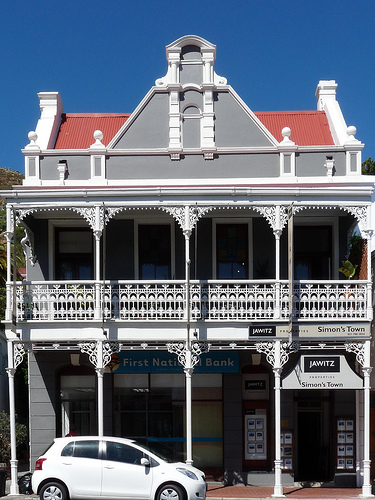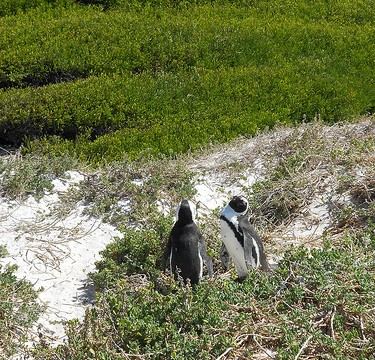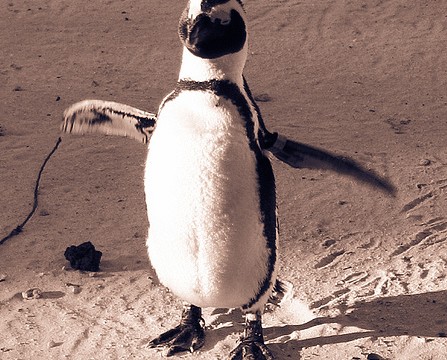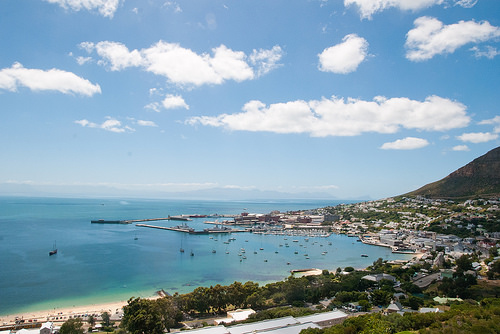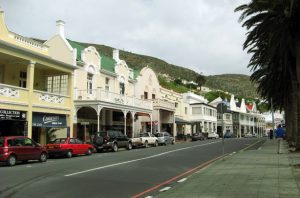
If you are after something a little different on your Cape Town holiday then why not take a trip to the nearby location of Simon’s Town, which is as well famed for its ghosts as it is its ancient history.
The Simon’s Town Museum may house many artifacts of life in Simon’s Town throughout the ages, but the building has more than enough history of its own. In the past, it has been used as a school, post office, jail and magistrates court amongst others.
On your Cape Town holiday make sure that you take a photograph of the oil painting in the Old Residency which when photographed always fails to develop. If the very idea of this frightens you, then you may not want to visit the basement of the museum during your tailor-made holiday to Cape Town. The basement used to be the old punishment cell where slaves and prisoners were dealt with. Even today whiplash marks can still be spotted on the ceiling, and it is said that if you walk the museum at night, then you can hear the echoes of their cries.
If you want a break from the horrors and the hauntings of Simon’s Town, then there are many different activities that you can enjoy in this region. Whale watching trips are exceptionally popular with tourists on their Cape Town holidays, and the nearby Boulder’s Beach is also the best place to spot penguins, with over 2500 birds.Take a respite from Simon’s Town and visit Boulders Beach, home to one of the world’s penguin breeding colonies or play nine holes and have lunch. The trip from Cape Town to Simon’s Town is stretched with fascinating landscapes and at the right time of the year a glimpse of the Southern Right whales visits.
As a seaside resort, Simon’s Town offers some of the excellent leisure services in the region. But one house that you probably won’t want to spend the night at is the Admiralty House which has been standing from 1740. The house was famously visited by Rudyard Kipling who noted that the then Admiral kept turtles bound up to the dock so as they could swim nearby the sea till the soup constituents were available for them.
The Royal family have since visited the house, and various members of aristocracy reported the rare instances that had happened to them while visiting the house on their Cape Town holidays. Lady Campbell spotted men in the naval outfit on the stairs, while the wife of a Vice-admiral reported an invisible man opening a doorway for her. The same woman in gray is regularly seen at Admiralty House, Ibeka and The Residency and these three buildings are said to be linked together by a network of tunnels.
With a prominent naval history, Simon’s Town is home to many maritime heroes, but the best recognized of these was Able Seaman, Just Nuisance, RN, the only dog to serve in the Royal Navy. A commemorative statue of the Great Dane stands in Jubilee Square and has become the symbol of the town, with vendors selling Just Nuisance keychains and fridge magnets for you to purchase as souvenirs on your Cape Town holidays.
Simon’s Town is also a major pilgrimage site for Muslim visitors. During the 18th Century, a Muslim grave was uncovered under trees, and while it is unknown exactly who was buried there, the site is said to have a strange physical aura surrounding it.It is a site that anyone would like to visit.
Table Mountain Park is unique in that visitors will not be able to find such a vibrant biodiversity or fabulous beauty anywhere else in the world, particularly in an area that is primarily metropolitan and includes the sophisticated city of Cape Town.
Visitors can enjoy gorgeous natural beauty during a variety of scenic drives throughout the park, including Chapman’s Peak Drive, Boyes Drive, Victoria Road, the path from Simon’s Town to Smitswinkel Bay and the drive that runs from Kommetjie to Scarborough. Be sure to bring a packed lunch along with you as you will find plenty of opportunities to stop and have a picnic.
Simon’s Town is the perfect place to spend a few days while on your tailor-made holiday to Cape Town and, like many of the former residents, who still haunt the city, you will be so taken with the destination that you won’t want to leave.
This article was sponsored by Premium Urgent Care https://premiumuc.com

